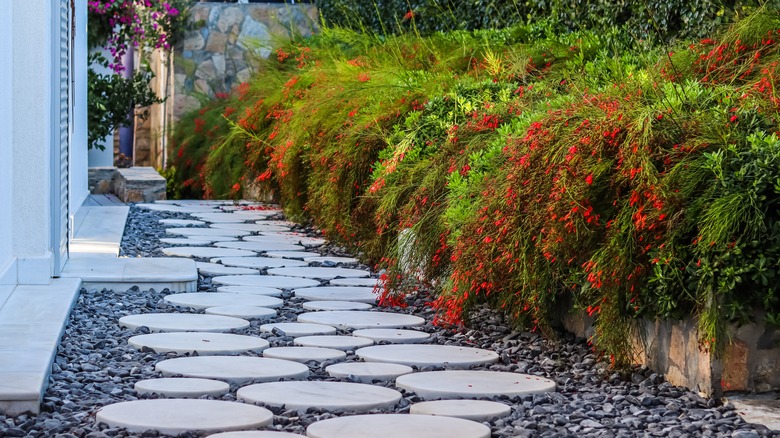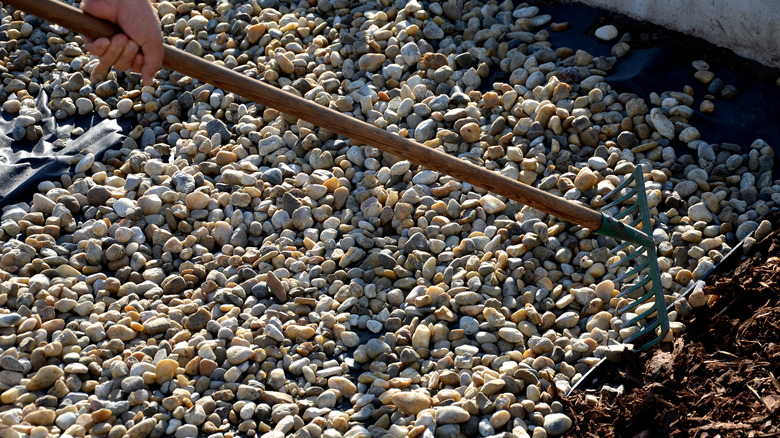A gravel garden is a type of garden that mainly features stones, rocks, and drought-tolerant plants. Having a gravel garden instead of a traditional lawn can offer several benefits, especially in certain contexts and environments. It is well-suited for areas where water is scarce and drought is common, but is also an attractive option for busy homeowners or anyone who simply prefers a low-maintenance landscape.
The main benefits of a gravel garden are that it is much more water-efficient and low maintenance. While traditional lawns require frequent watering and attention to maintain their lush appearance, gravel gardens don’t need any of that to provide a good landscape. Getting to keep the time, labor, and money it typically takes to work on a lawn makes this a better option for you as a homeowner and for the environment as a whole. Gravel gardens also offer a range of design possibilities, especially when you work with your environment. In addition to forming interesting garden layouts, the landscape will always be unique if you incorporate native plants and create a habitat for the animals that are part of the local ecosystem.
More about gravel gardens

Unlike traditional lawns or gardens with extensive plantings, a gravel garden is characterized by its simple and low-maintenance approach. It typically has gravel as the primary element and ground cover. Various sizes and types of gravel can be used to create visual interest and texture. Of course, plants are another key element of a gravel garden. Succulents, grasses, herbs, and other native or adapted species are commonly used to add life and color to the scene. Gravel gardens can be designed in various styles, ranging from modern and minimalist to naturalistic and rustic. The gravel and plants are arranged in creative patterns like pathways, for example, which define certain areas.
To ensure you have a smooth maintenance routine, use the right materials during installation. Quality, durable gravel will last long while weed membranes will prevent weeds from popping up. Cleaning and maintenance techniques can be as simple as keeping your plants watered and using a leaf blower to keep the gravel clear of debris.
How to transition from a lawn to a gravel garden

If you’re tired of weeding, using chemicals on the lawn, hearing the mower, or want to cut down on your water bill, transitioning to a gravel garden will definitely improve your lawn experience. First, clear your lawn by digging up all the grass or applying herbicide. Then, install an edge around the garden area. The border is helpful because it lets you know how much gravel to fill in. Next, pour in your quality gravel about 4 to 5 inches deep to create your lawn. Now you can sow your plants.
Some great drought-tolerant plants to consider are euphorbias for a pop of color, “big ears” to add texture, and lavender for the scent. Make a hole with your hands and put the plants in so their crowns are level with the top layer of the gravel. Note that they will need a lot of water during this initial stage so they can grow strong enough to thrive in the dryness later on.




